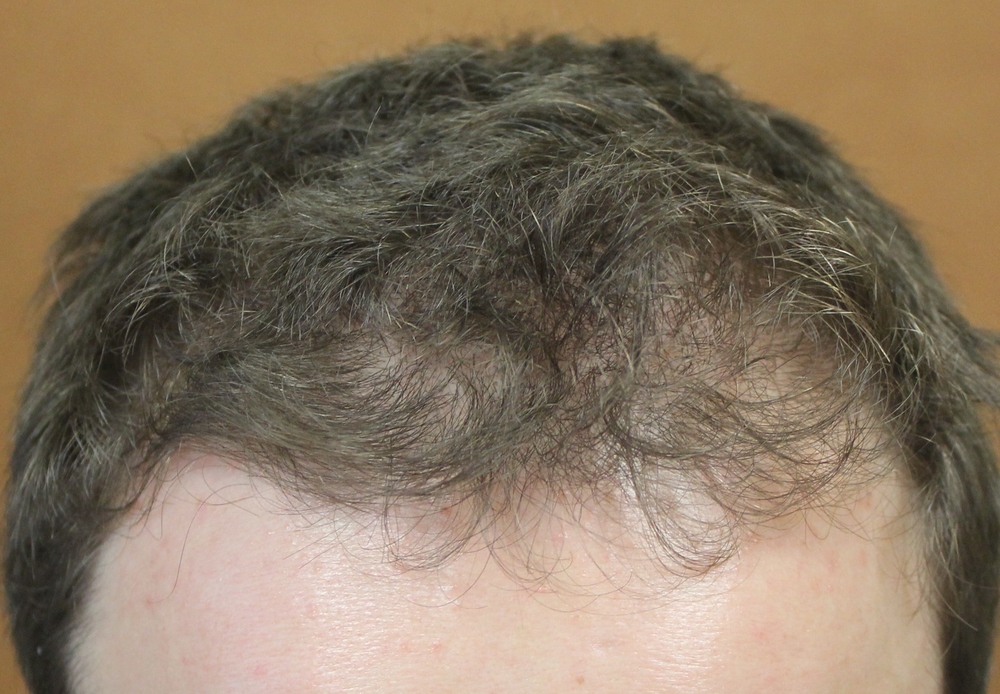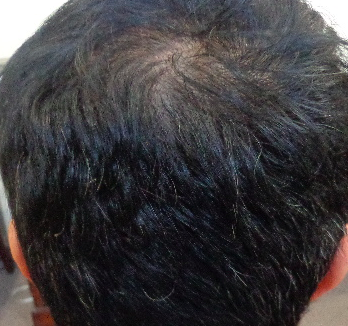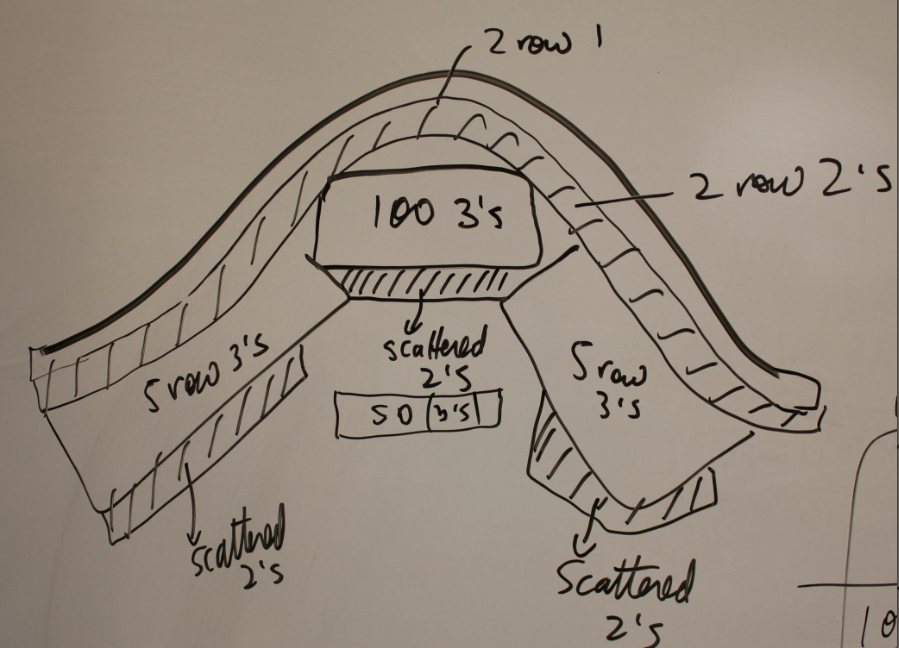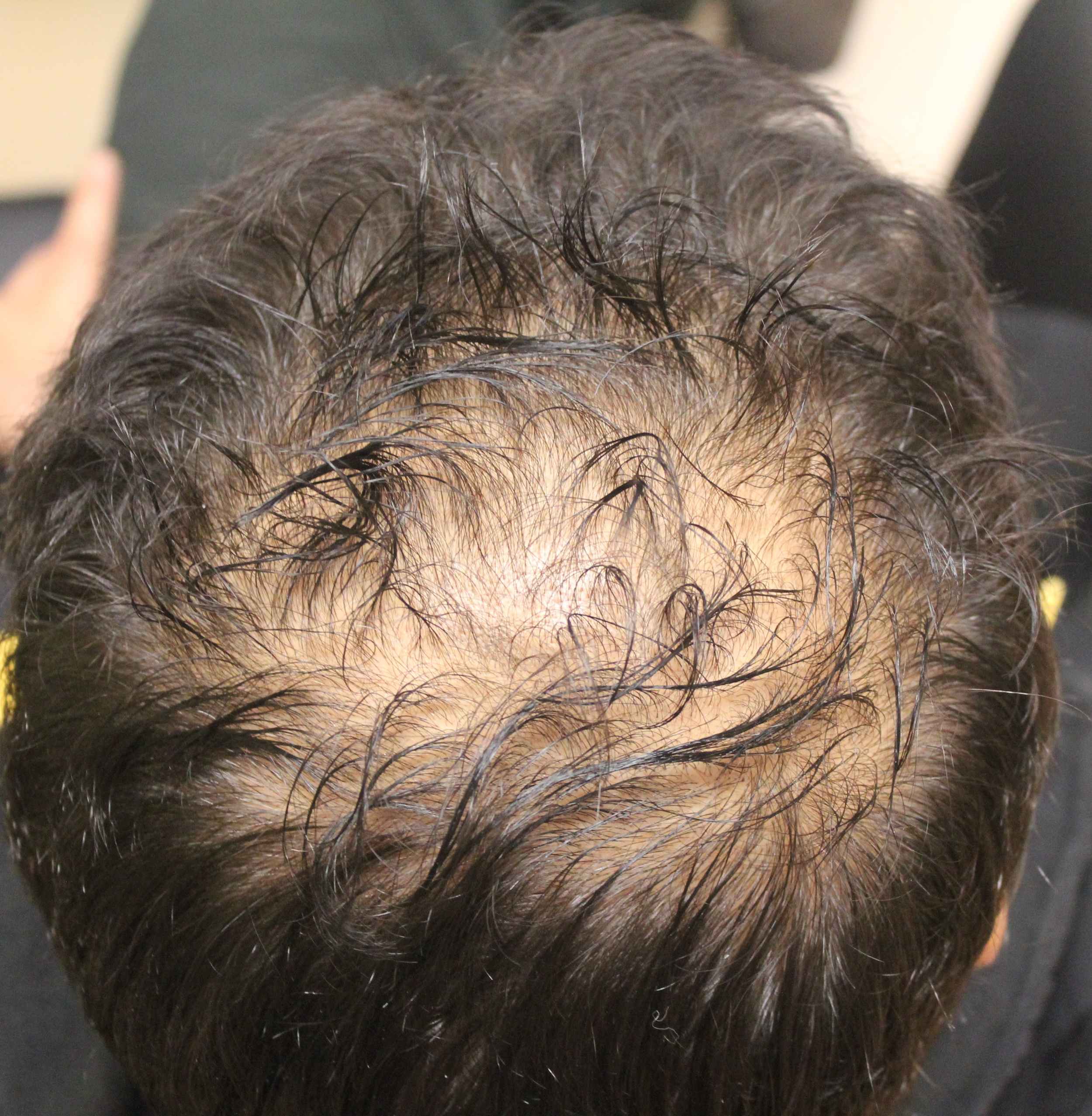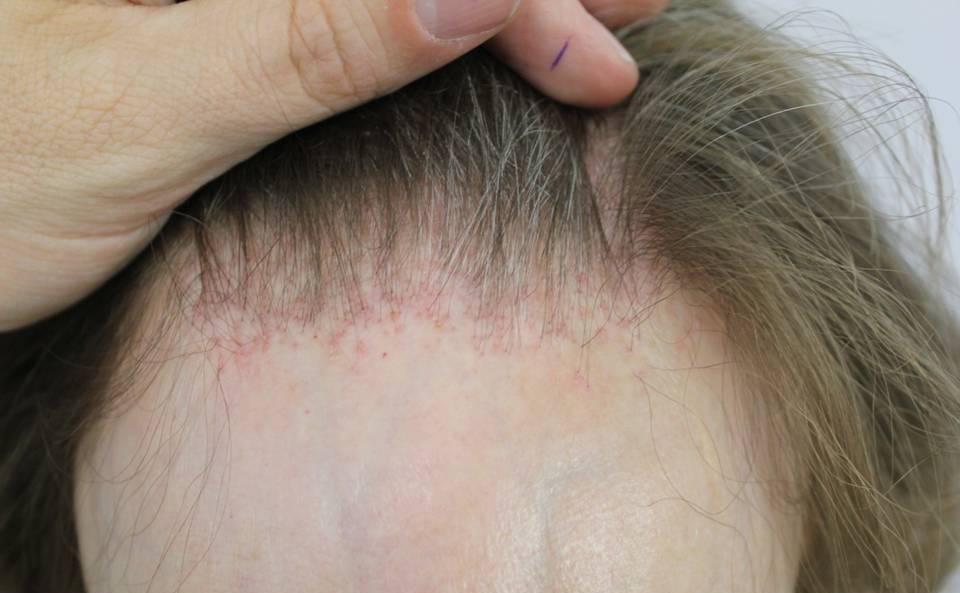Cicatricial Marginal Alopecia: Your traction alopecia patients will thank you!
Not all ‘Traction Alopecia’ is Actually Traction Alopecia
Traction alopecia is a form of hair loss that occurs due to pulling of hair. Diagnosing traction alopecia sounds easy but surprisingly there are a great number of mimicking conditions that can fool the hair specialist.
Frontal traction alopecia refers to hair loss in the frontal hairline that is due to traction. Often the temples are affected but any part of the frontal hairline, temples and area around the ears can be affected. Often the hairs in the very frontal hairline are unaffected leading to the appearance of a so called “fringe” sign:
Classic ‘fringe’ sign in a patient with traction alopecia. The fringe refers to the fringe of hair in the frontal hairline.
Cicatricial Marginal Alopecia (CMA)
There are times when patients who present with what seems to be traction alopecia tell us that they couldn’t possibly have traction alopecia. These are the patients who tell us that they have worn their hair fairly natural for years and that a diagnosis of traction alopecia just makes no sense to them. These are the patients that politely stare at us when we tell them to be careful how they style their hair and to be carefully to avoid heat or chemicals. When a hair specialist wants to make a diagnosis of traction alopecia but realizes the patient’s story just does not add up to give a convincing story of traction alopecia - the diagnosis of cicatricial marginal alopecia (CMA) must be considered.
The Differential Diagnosis of Frontal Hair Loss: What’s a specialist to consider anyways?
Of course, the diligent hair specialist considers many things in the differential of frontal traction alopecia like presentations including
1. Traction alopecia
2. Cicatricial Marginal Alopecia
3. Frontal fibrosing alopecia
4. Discoid lupus
5. Androgenetic alopecia
6. Telogen effluvium
7. Alopecia Areata
8. Trichotillomania
Cicatricial Marginal Alopecia: A Traction Alopecia Like Alopecia Without A Traction History
It was Dr Lynn Goldberg in Boston who put forth the notion of cicatricial marginal alopecia. She described 15 patients who presented with hair loss in a typical traction alopecia like pattern. Information pertaining to whether or not the patient relaxed or straightened the hair was available In 12 patients. 6 of the 12 patients gave a history of relaxing the hair or straightening the hair. For the other 6 other patients there was no such history. In other words, in 50 % of patients with frontal 'traction alopecia-like” hair loss a history of true traction styling practices were not present. These patients still had some degree of scarring on their biopsies indicating that this too could be a scarring type of hair loss.
Treatment of CMA involves topical or oral minoxidil combined with topical and/or intralesional steroids. In some patients use of agents like oral doxycycline or topical tacrolimus can be helpful.
Summary and Key Lessons
As soon as we let open our mouths to pronounce the words traction alopecia, we must say in the same breath “or a traction alopecia like mimickers.” Could my patient have traction alopecia or a “traction alopecia like mimicker.”
Cicatricial Marginal Alopecia is one of these closely related mimickers. I like to refer to it as cicatrical marginal alopecia to honour my great colleague Dr Goldberg and so this is what I write in all my letters and consultation notes to other physicians. In my mind, I say the patient has a Traction Alopecia Like Alopecia Without a Traction History because it helps me remember the key elements of this presentation.
Reference
Goldberg L. Cicatricial Marginal Alopecia: Is It All Traction? Br J Dermatol 2009 Jan;160(1):62-8.
This article was written by Dr. Jeff Donovan, a Canadian and US board certified dermatologist specializing exclusively in hair loss.

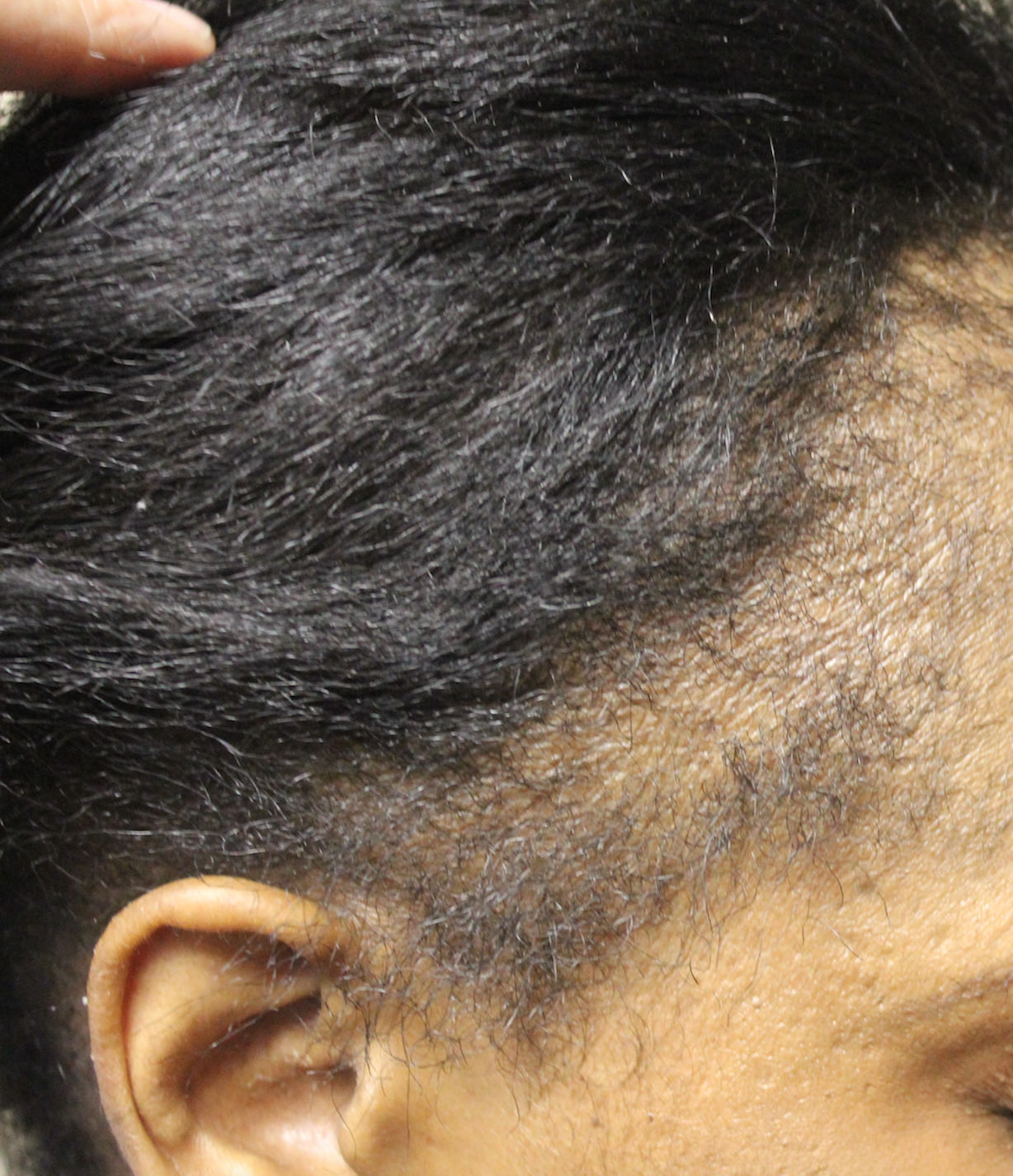

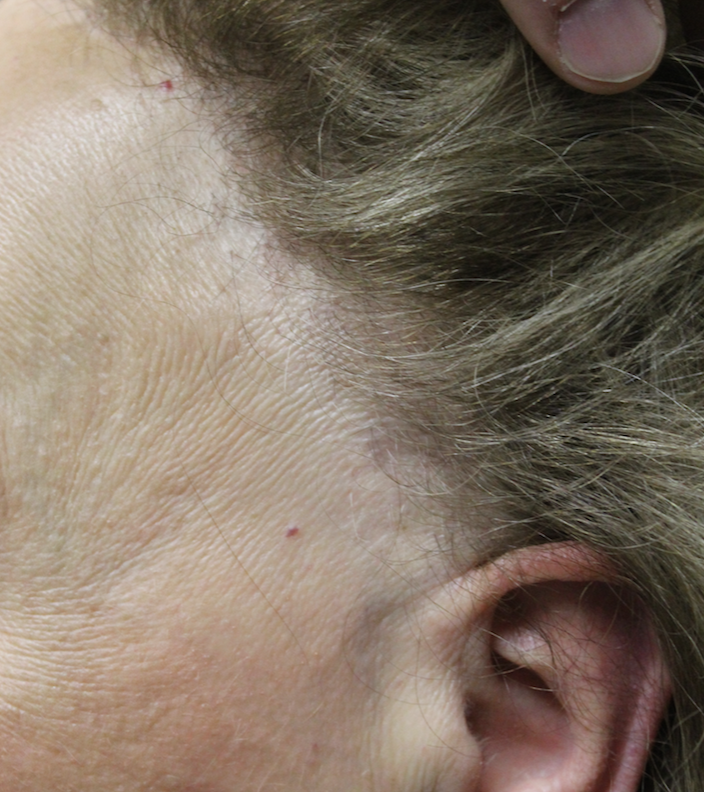

![mature%20and%20balding[1].jpg](https://images.squarespace-cdn.com/content/v1/5243dccde4b08fd9e4fc92ef/1381296519700-CV7E2TO9YL5WSSBWOS9F/mature%2520and%2520balding%5B1%5D.jpg)
